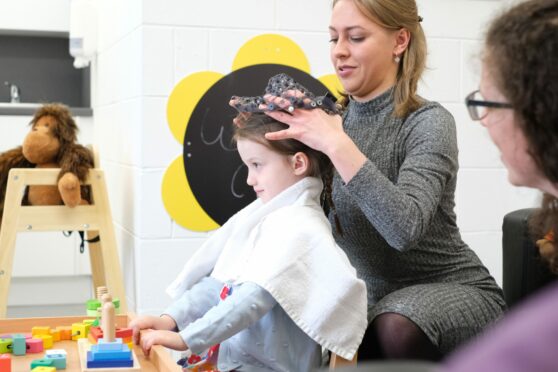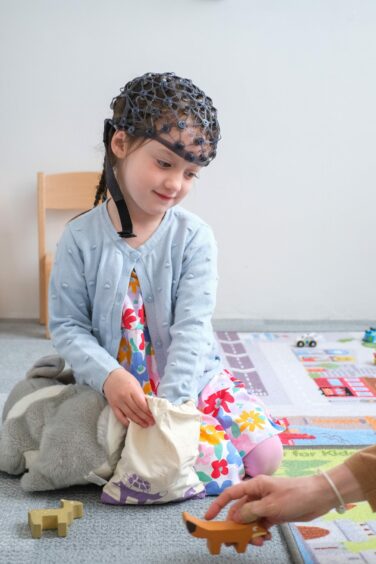
A specialist laboratory which uses advanced technology to study human behaviour and brain function from infancy to old age has opened in Scotland.
The first of its kind in the country, the facility at Stirling University will allow researchers to monitor cognition, health and well-being in everyone from toddlers to pensioners.
The new lab has a range of state-of-the-art equipment which is vital in the study of people who can’t effectively communicate, such as infants who have not yet learned to talk.
It will also allow researchers to study the behaviour of children using cameras linked to a screen in a separate room, allowing them to observe their free play and interactions with others.
In a double first, the facility will complement the university’s fully integrated research kindergarten – which is also the only one of its kind in Scotland.
Dr Line Caes, associate professor in psychology, said: “Measuring cognition in circumstances where verbal communication is either limited or not possible is a significant challenge, such as in the case of infants and very young children. The equipment in the Lifespan Research Lab can be used on young children, opening promising avenues in cognitive assessment.”
Researchers can use the lab for a range of projects, including increasing the understanding of parent-infant interactions during everyday situations, research into factors involved in the development and decline of socio-cognitive abilities across the lifespan, and studying the cognitive capacity of children in dealing with uncertainty.
The trailblazing unit has equipment for measuring non-verbal attention, brain activity, and physiological responses, skin conductance sensors, camera traps and thermal imaging cameras.
Dr Caes continued: “We are the only institution in Scotland with an in-house kindergarten and the addition of this lab that allows assessment of younger children will bolster this research capacity, facilitate research bids by various principal investigators and increase Stirling’s reputation as a leader in the study of cognitive development.”
Dean of the faculty of natural sciences, professor Alistair Jump, added: “This investment delivers exciting new opportunities to better understand cognition, communication and development across the lifespan, from infancy to old age.”

Enjoy the convenience of having The Sunday Post delivered as a digital ePaper straight to your smartphone, tablet or computer.
Subscribe for only £5.49 a month and enjoy all the benefits of the printed paper as a digital replica.
Subscribe © Jim Payne
© Jim Payne